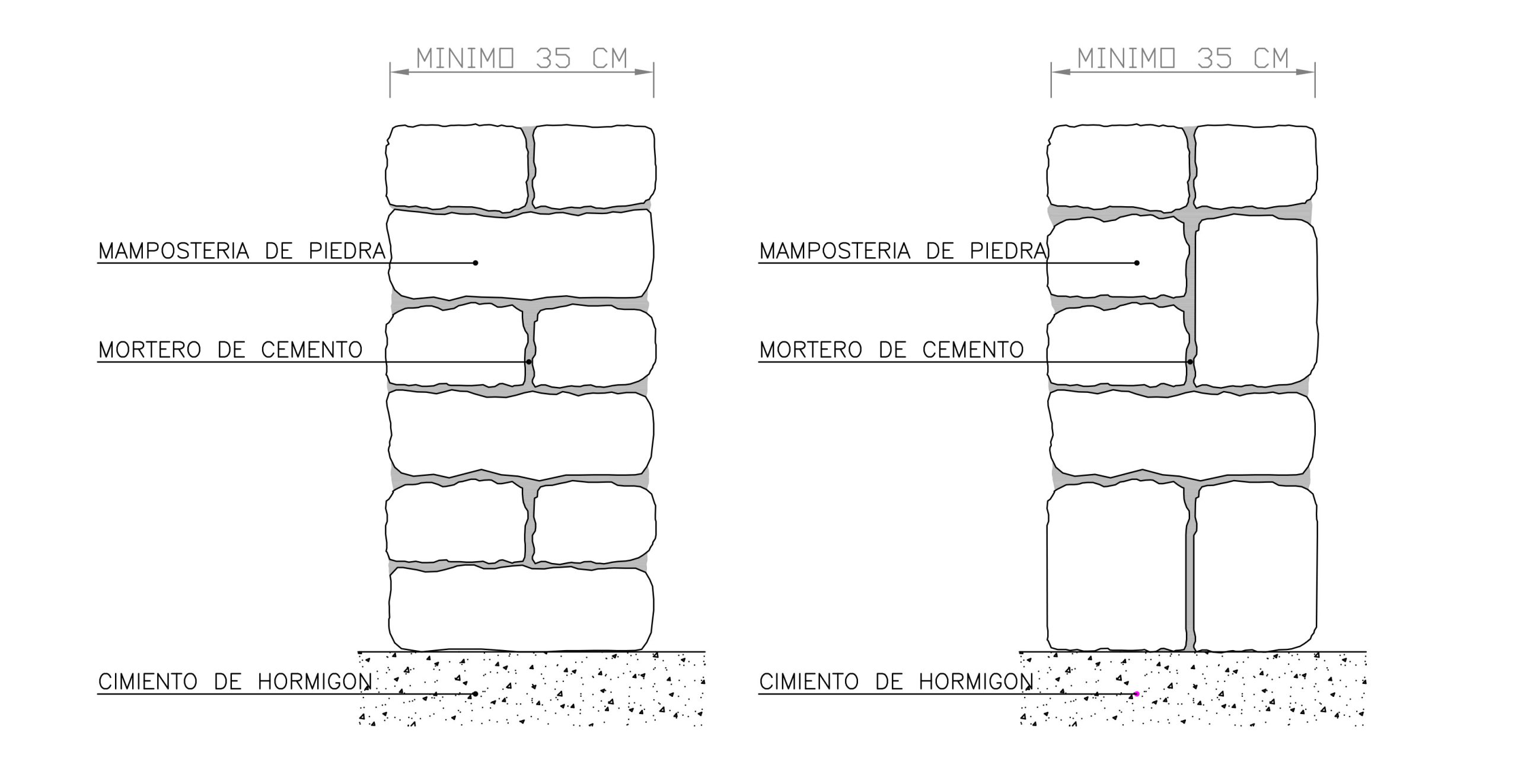Technical information > Professional area > Masonry Walls

We call masonry the traditional system of construction, which consists of erecting walls by manually placing the stone elements that make them up (masonry), which are usually rough hewn or unworked.
This system makes it possible to build load-bearing façades; it is suitable for constructions of great height. Most of the construction is structural.
The arrangement and interlocking of the materials used in the walls is called rigging.
The following types of masonry can be distinguished:
DRY MASONRY
In this type of masonry no mortar is used. The masonry has to be chosen one by one so that the whole has stability. Small stones, called rubble, are used to wedge the masonry and fill the gaps between them.
ORDINARY MASONRY
This is made with cement mortar (formerly lime mortar). The stones should be adapted to each other as much as possible to leave the smallest percentage of gaps filled with mortar.
FACED MASONRY
This is a masonry masonry whose masonry has been worked only on the face intended to form the outer facing. The masonry is not of a specific shape or size. The interior of the walls may be made of rubble, but not on the exposed face.
MASONRY IN CONCERT WITH MASONRY
This consists of masonry masonry whose brickwork has its joint and parameter faces carved in more or less regular polygonal shapes, so that the masonry is laid on substantially flat faces.
The use of rubble is not allowed, and the exterior facing masonry must be prepared in such a way that the visible faces are polygonal in shape and fill the gap left by the adjoining masonry. The concurrence of four masonry edges at the same vertex must be avoided.
When the masonry is thicker than the thickness of the masonry, the masonry of the exposed faces shall be laid first, and then the main masonry of the backfill shall be laid, wedged with rubble if necessary. From stretch to stretch, the two faces will be joined with braces or braces as long as necessary to give the whole a solid bond. If the thickness is so great that it cannot be covered with a single key, then two or more are placed alternately, reaching more than half the thickness and, if necessary, they are clamped by their tails with metal clamps.
